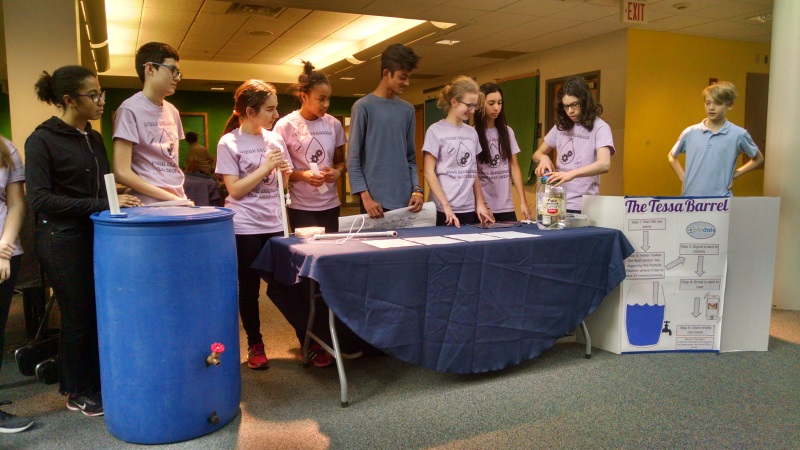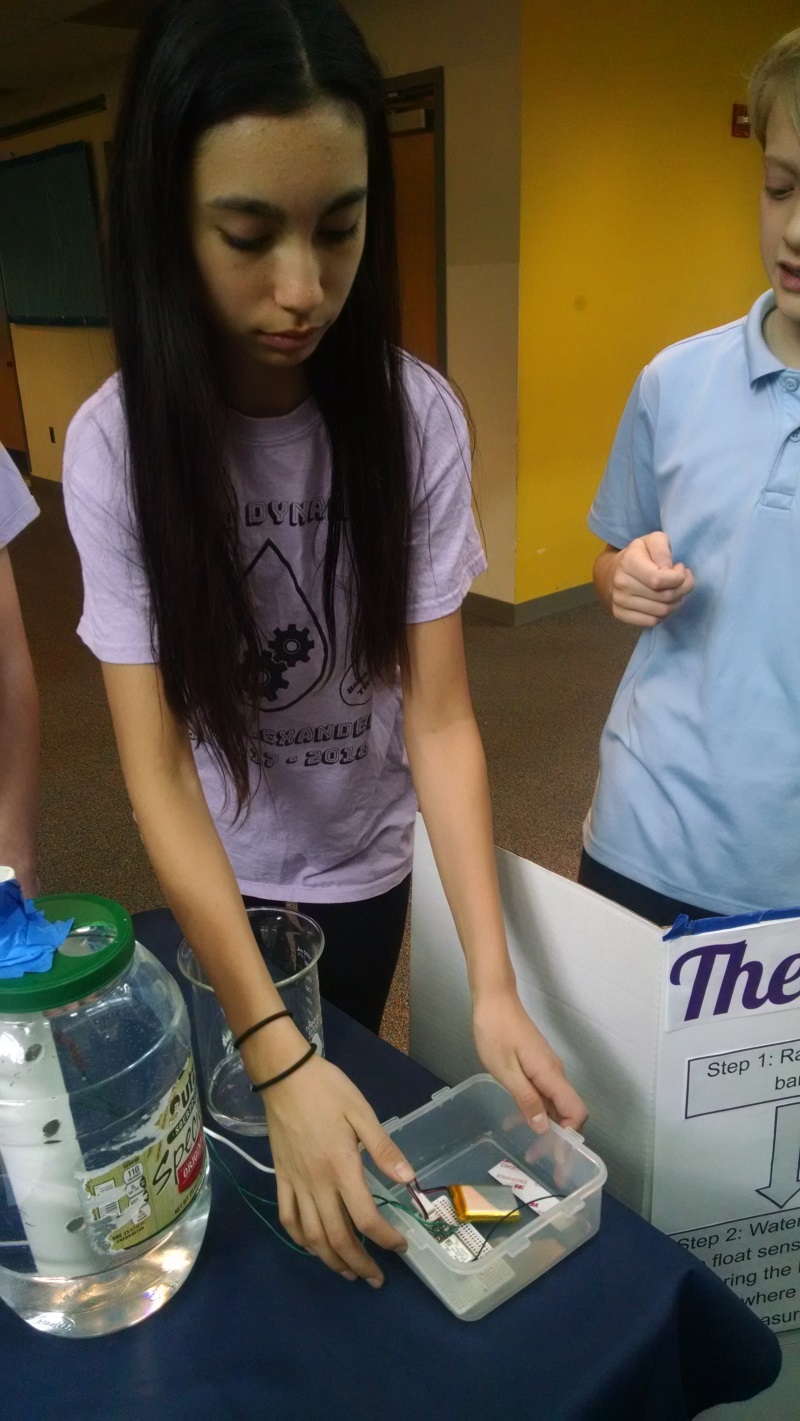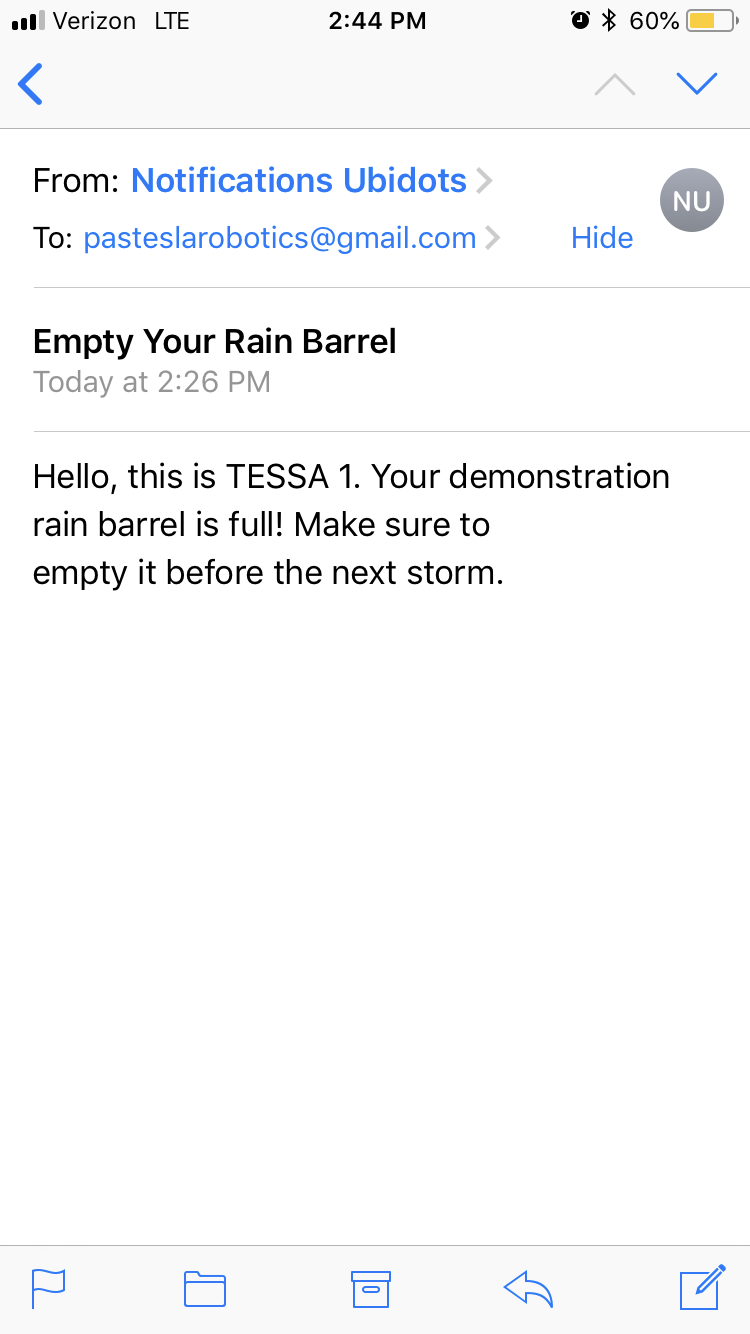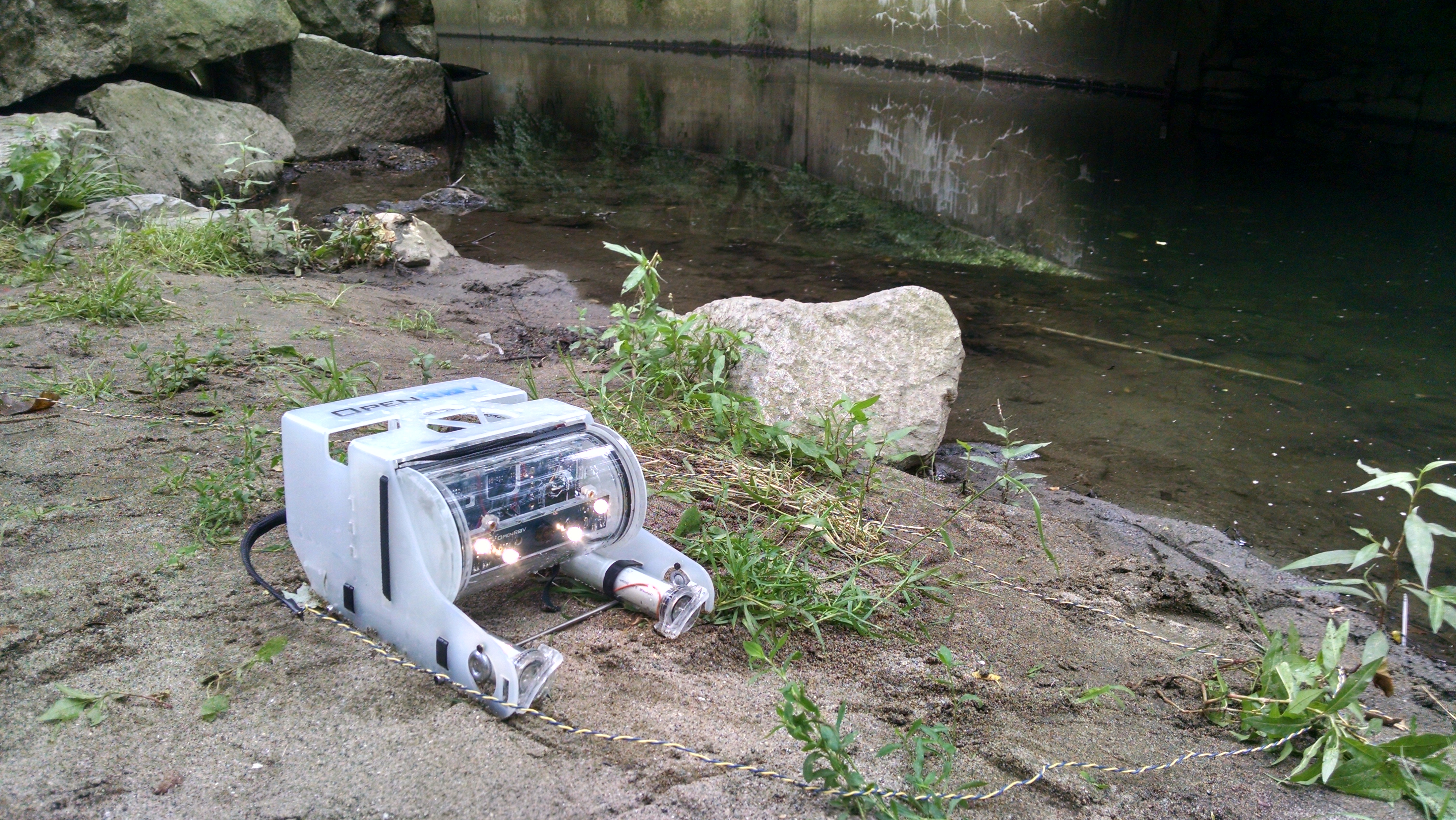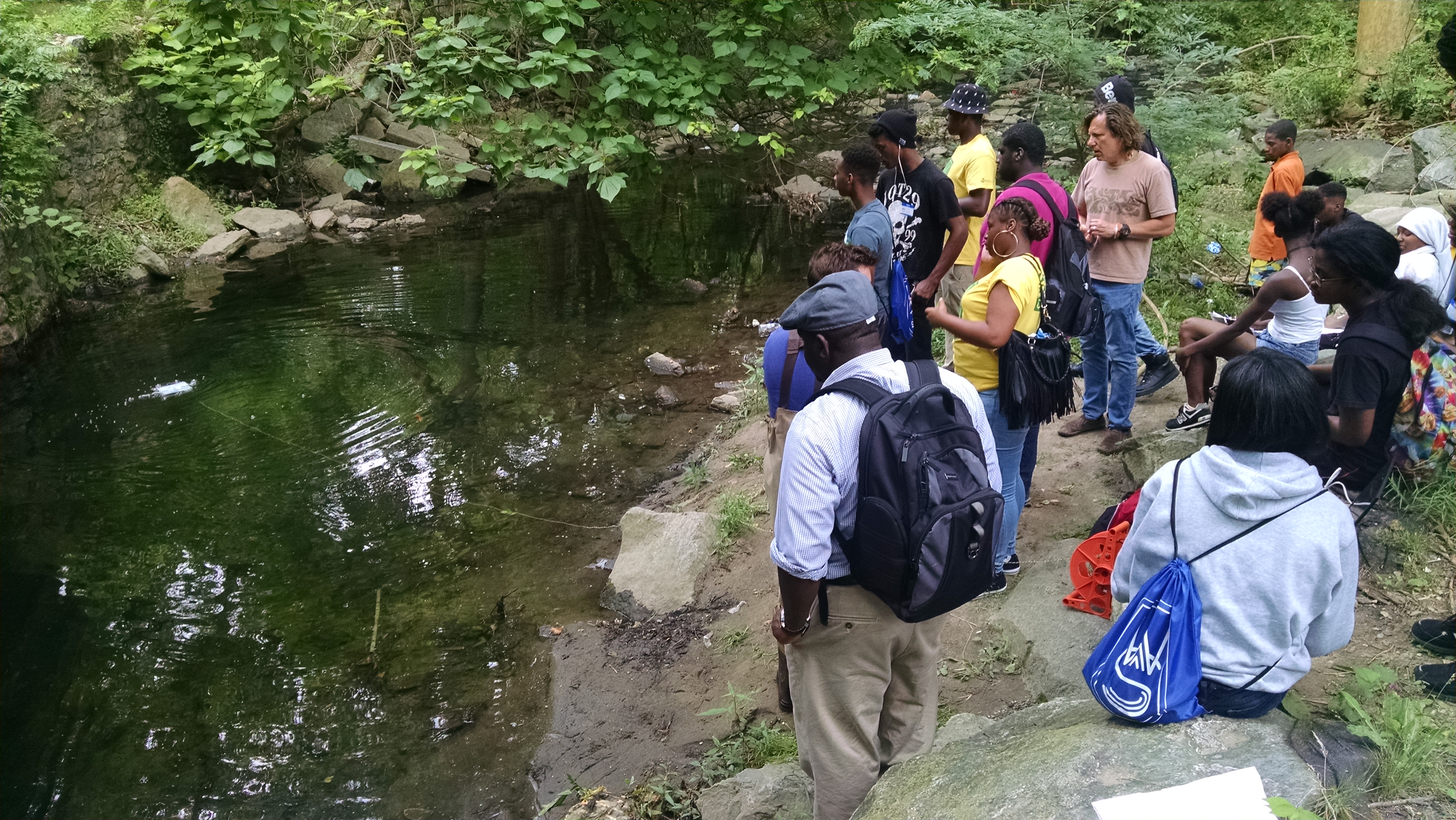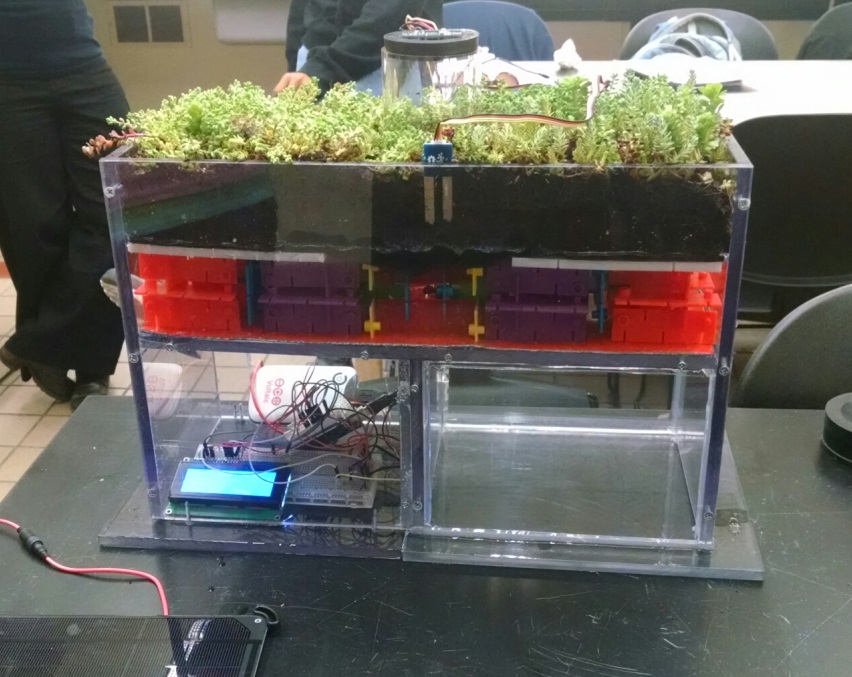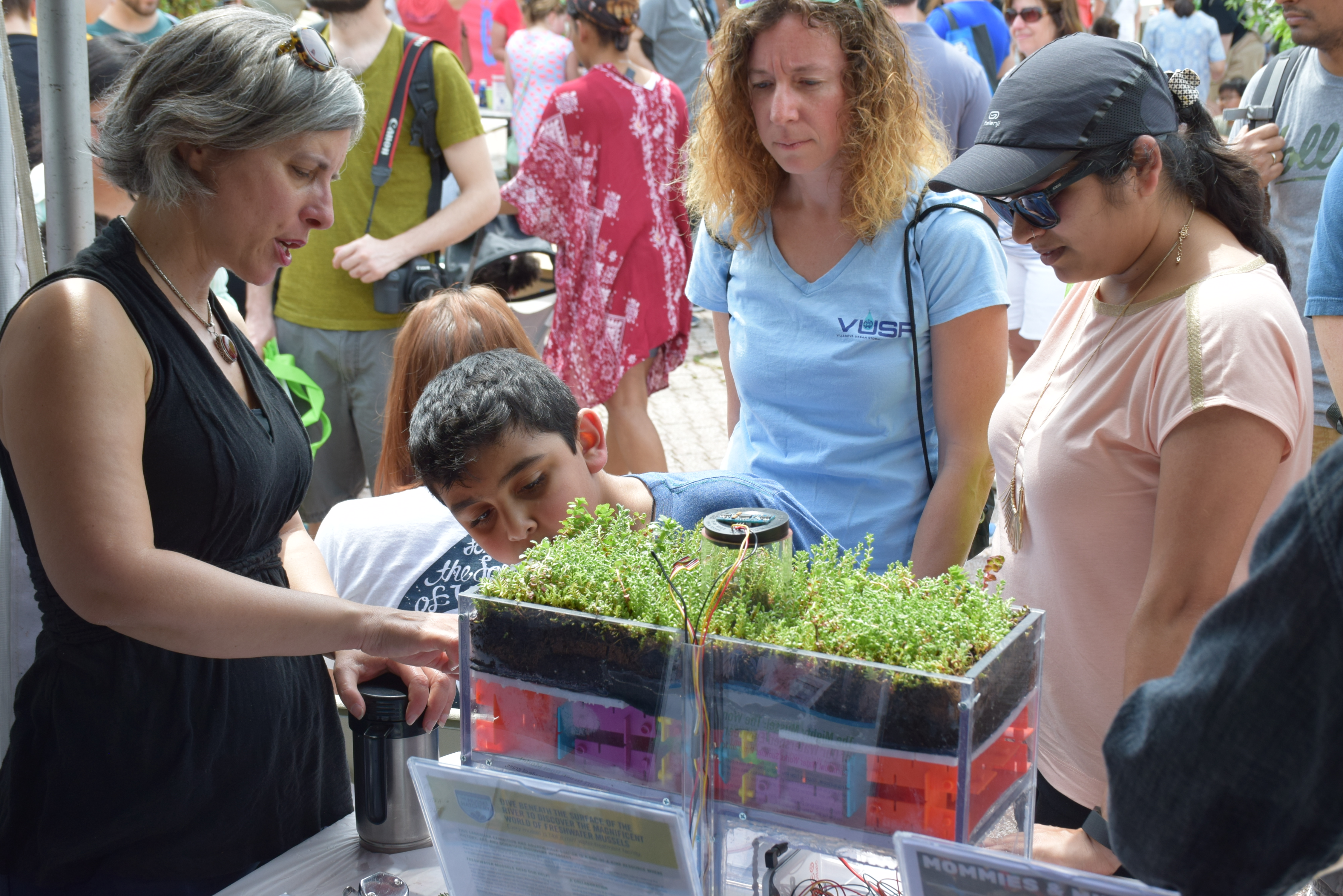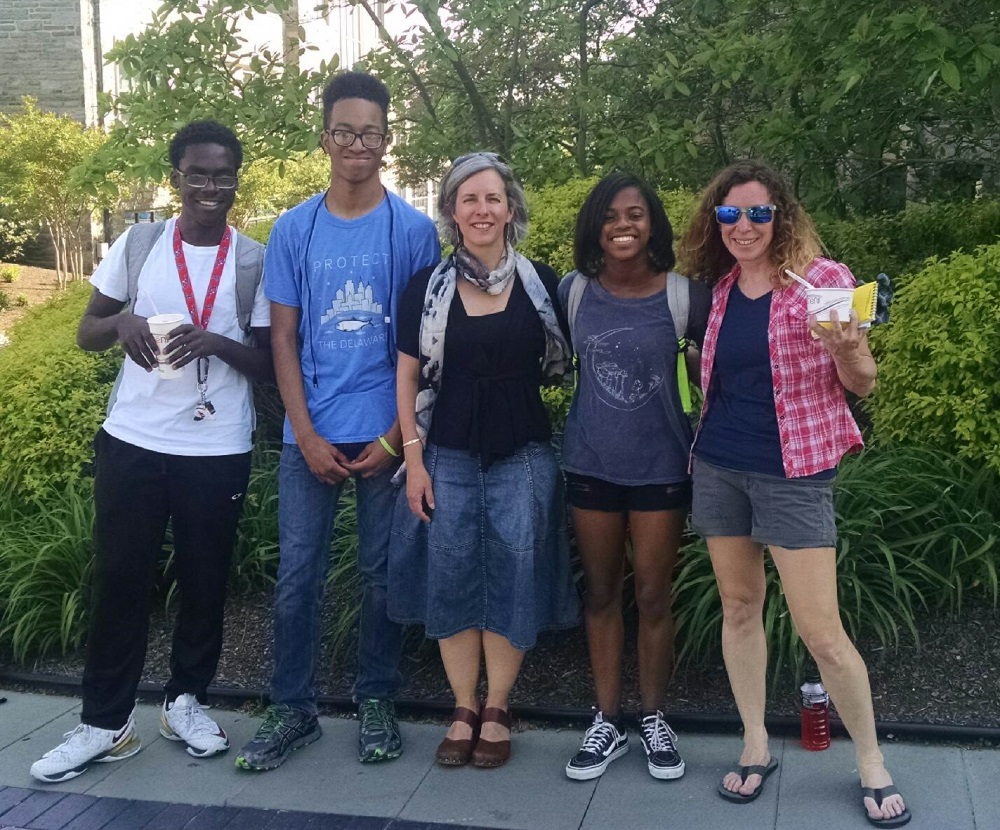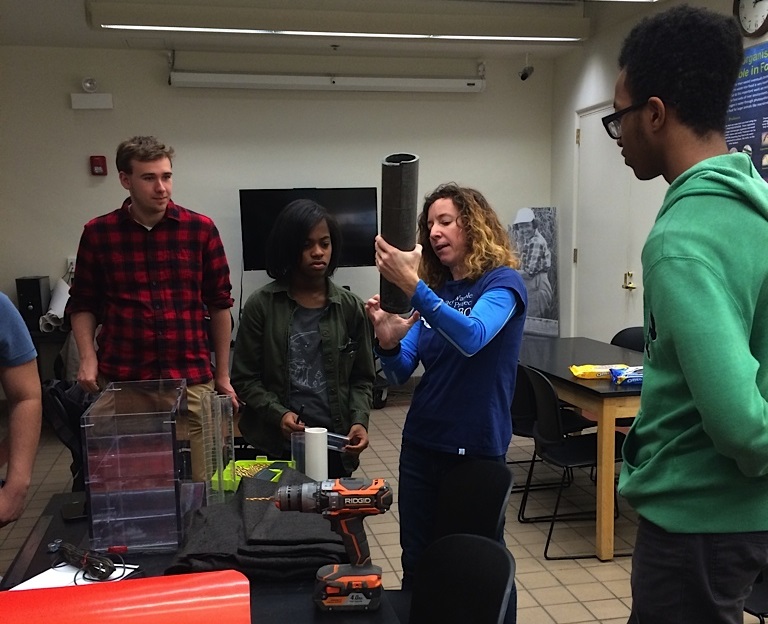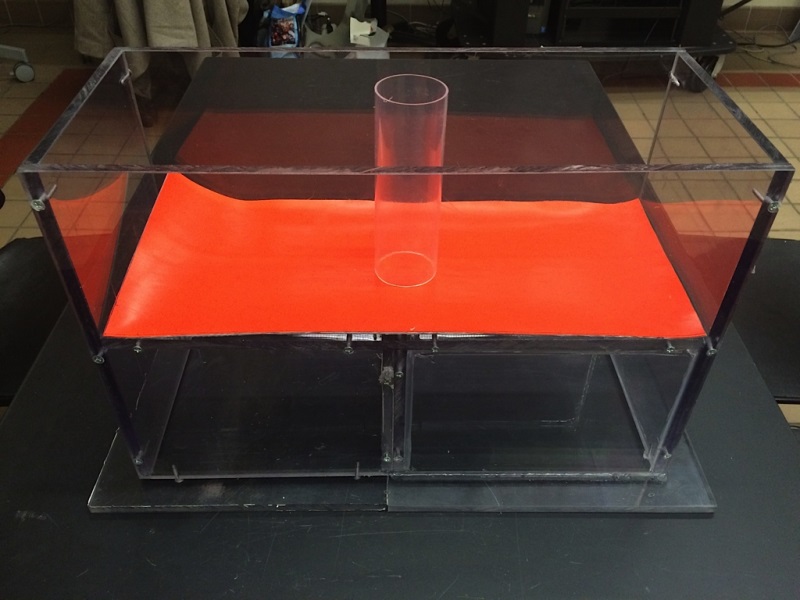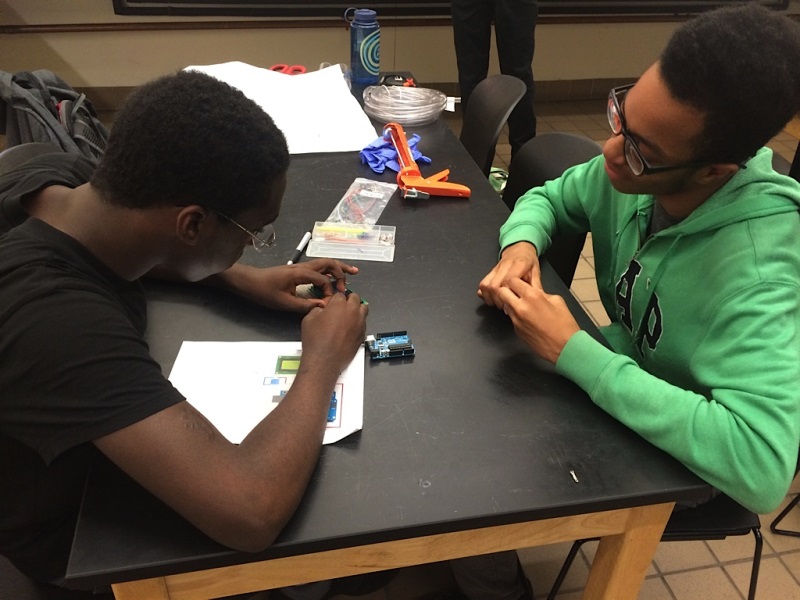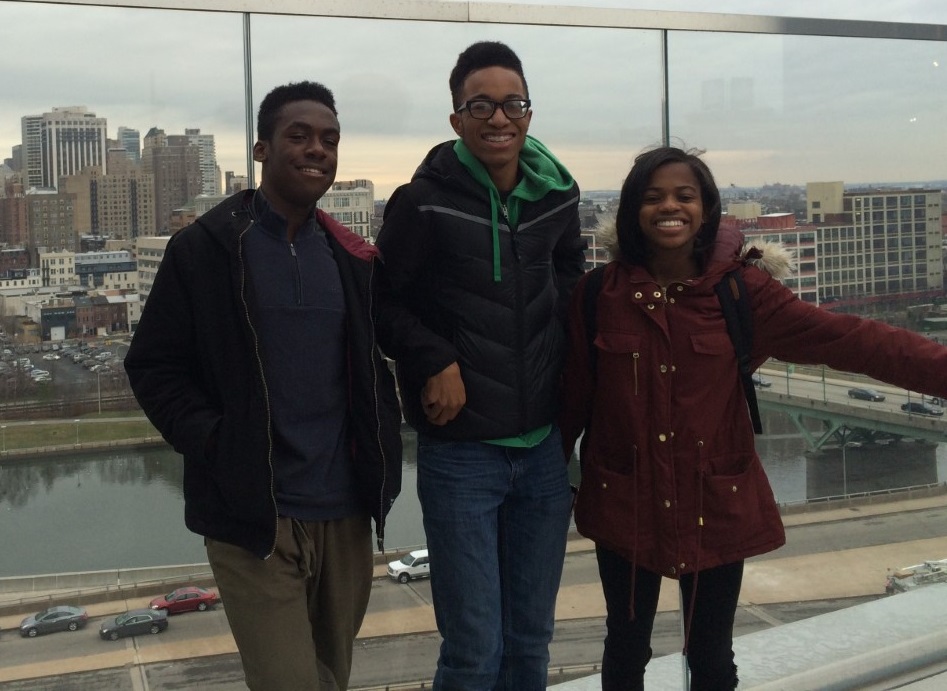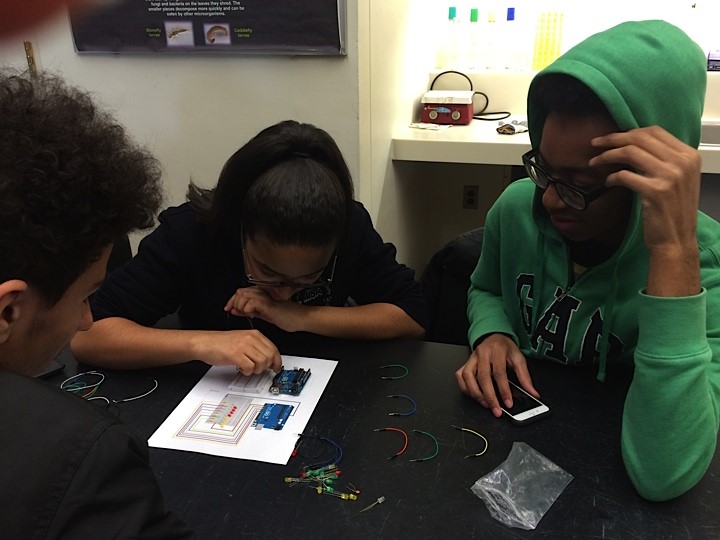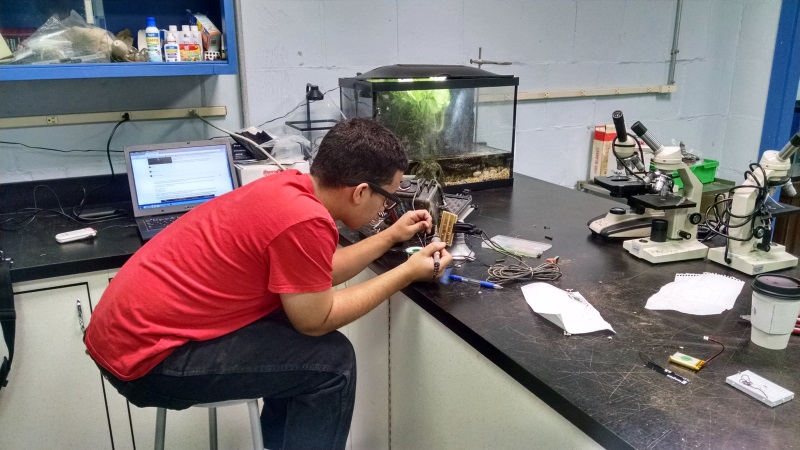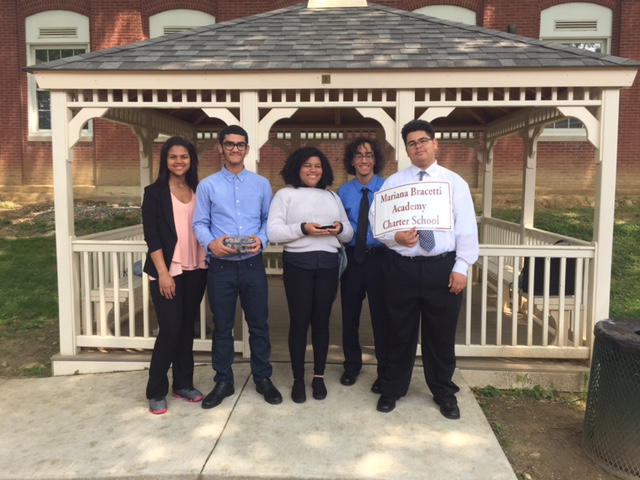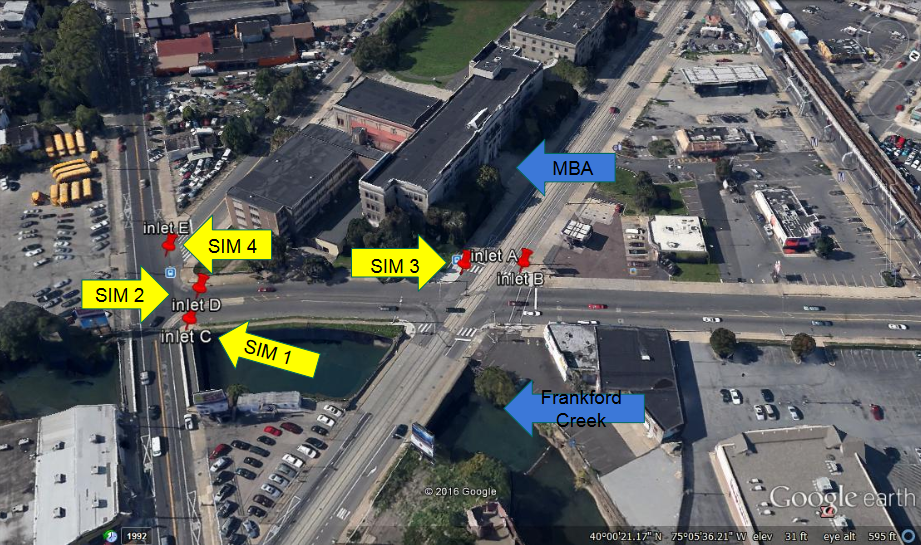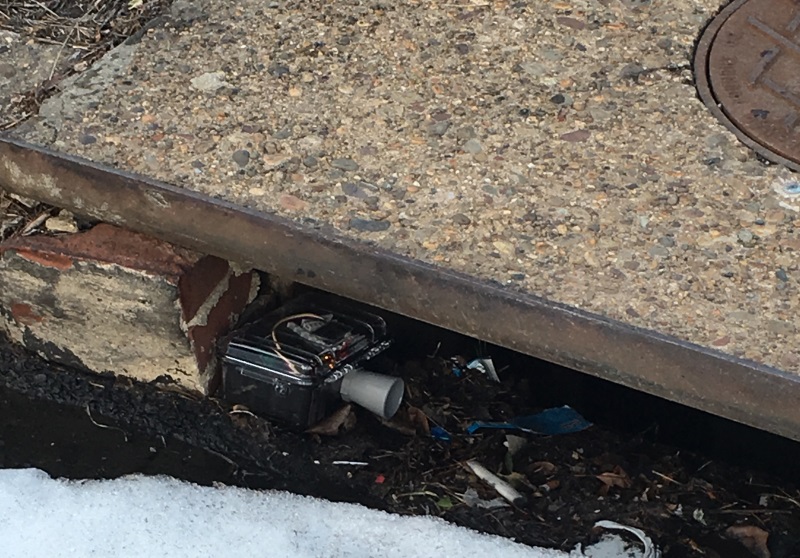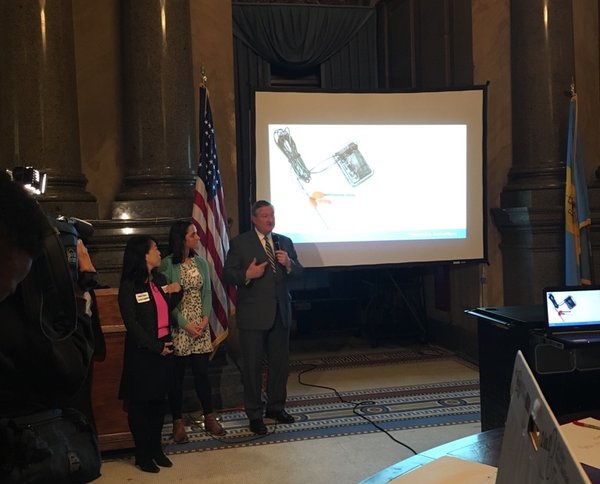
While most Philadelphia students were heading home early due a heat wave this past Tuesday, four 11th grade students from Mariana Bracetti Academy were busy suiting up in full-body chest waders, a necessary piece of gear for the mission at hand: launching a submersible, camera-equipped drone in Frankford Creek.
Undaunted by the steamy temps, the students’ maiden voyage was the culmination of five weekly afterschool sessions they had spent assembling the drone through a program called greenSTEM. An effort of the Philadelphia Water Department, the educational program shows local students how jobs in science, technology, engineering and math (STEM) fields support the department’s watershed protection work.
Built using a kit greenSTEM instructors Matthew Fritch and Maria Horowitz obtained with the Fairmount Water Works through a CUSP (Climate & Urban Systems Partnership) grant, the propeller-driven rover fits in a suitcase and resembles a mashup of the original R2-D2 and a tabletop video projector.
Clearly eager to give it a spin, students Manuela Duran, Angel Cruz, Luz Gonzalez-Mateo and Candy Lucero-Sanchez were joined along Juniata Golf Club section of the stream by their teacher, Lauren DeHart.
“This group of kids has been really great, very engaged and super interested,” said Fritch, a PWD environmental engineer who started greenSTEM several years ago. “Having a dedicated* teacher like Mrs. DeHart who’s really involved and supportive of the learning process really makes a difference too, so this year’s program was a big success.”
While they began by learning about various aspects of coding and how custom-built sensors can help engineers solve distinct challenges, they finished their studies by soldering together parts and circuit boards before assembling the drone’s water-proof casing and laser-assisted navigation system.
Fritch also says that, in addition to building the machine, the students discussed how it could help scientists study parts of our watersheds that are normally hard and even dangerous to reach, requiring a human in scuba diving gear.
“This is something that can help us explore the health of local benthic ecosystems—the plants, fish, insects and crustaceans that are living in along the bottom of our rivers and creeks,” Fritch explained. “We don’t often get down there to look at it, but this could provide a window into an important world.”
For Horowitz, also a PWD environmental engineer, the drone provides an opportunity to get a closer look at her personal nemesis—litter. As one of the PWD staff members working to address the issue of “floatables”— that’s buoyant trash from surrounding neighborhoods that gets washed into our waterways—she is constantly looking for ways to take on and quantify litter.
The drone, she says, could help scientists get a better idea of how much trash ends up on stream and river beds.
“We spend a lot of time skimming for trash and getting litter off the surface,” Horowitz says, “but how much of it lingers and accumulates on the bottom? Is it mostly getting washed downstream, or is it causing issues throughout these habitats? Having that camera and lights is a pretty cool tool for seeing what’s happening down there.”
Clad in waders, Horowitz was on hand to help drop the (so far nameless) drone into the water as DeHart and her students, split between the creek and a nearby laptop with equipped with camera display and controls, watched:
View from the banks:
Check out this video from the rover’s cameras during Tuesday’s test run, and skip to the 3:30 mark to see some of the benthos critters Fritch mentions:
After the drone’s first trip wrapped up, Cruz and Duran took a minute to break down the project:
Now its fifth year, greenSTEM has worked with several other schools on projects like a solar-powered phone charging station with a rain barrel and bench, a network of soil moisture sensors, and a system to detect when storm drains are clogged and need clearing.
But Fritch says this year’s project with Mariana Bracetti was a special one.
“You could tell the kids were into it, and they helped to create something that really can help us understand our waterways better,” Fritch says.
—Brian Rademaekers
*After taking an accidental dip in the creek, DeHart simply swapped into a fresh pair of waders, and went right back to teaching; it’s no exaggeration to say she’s dedicated.

